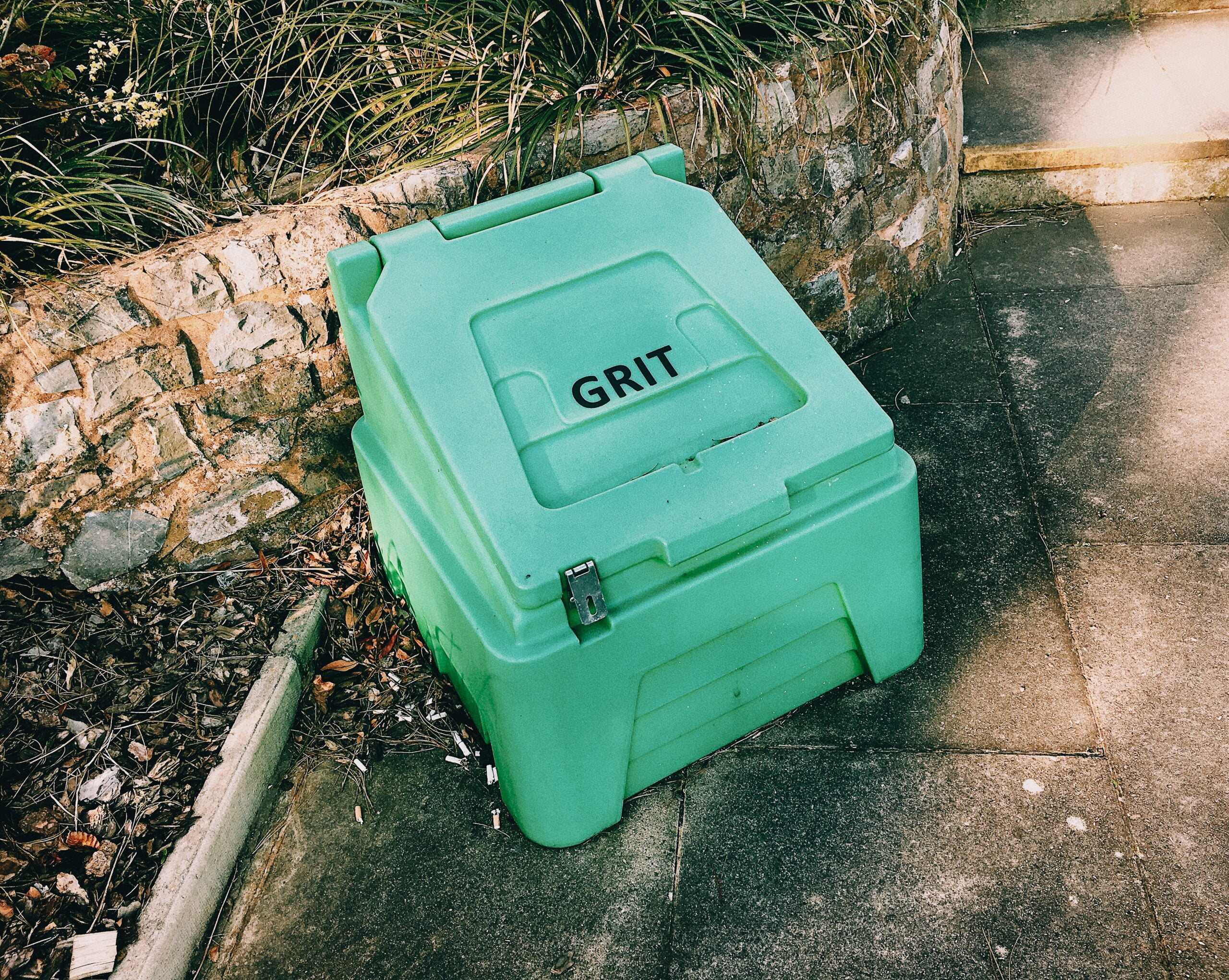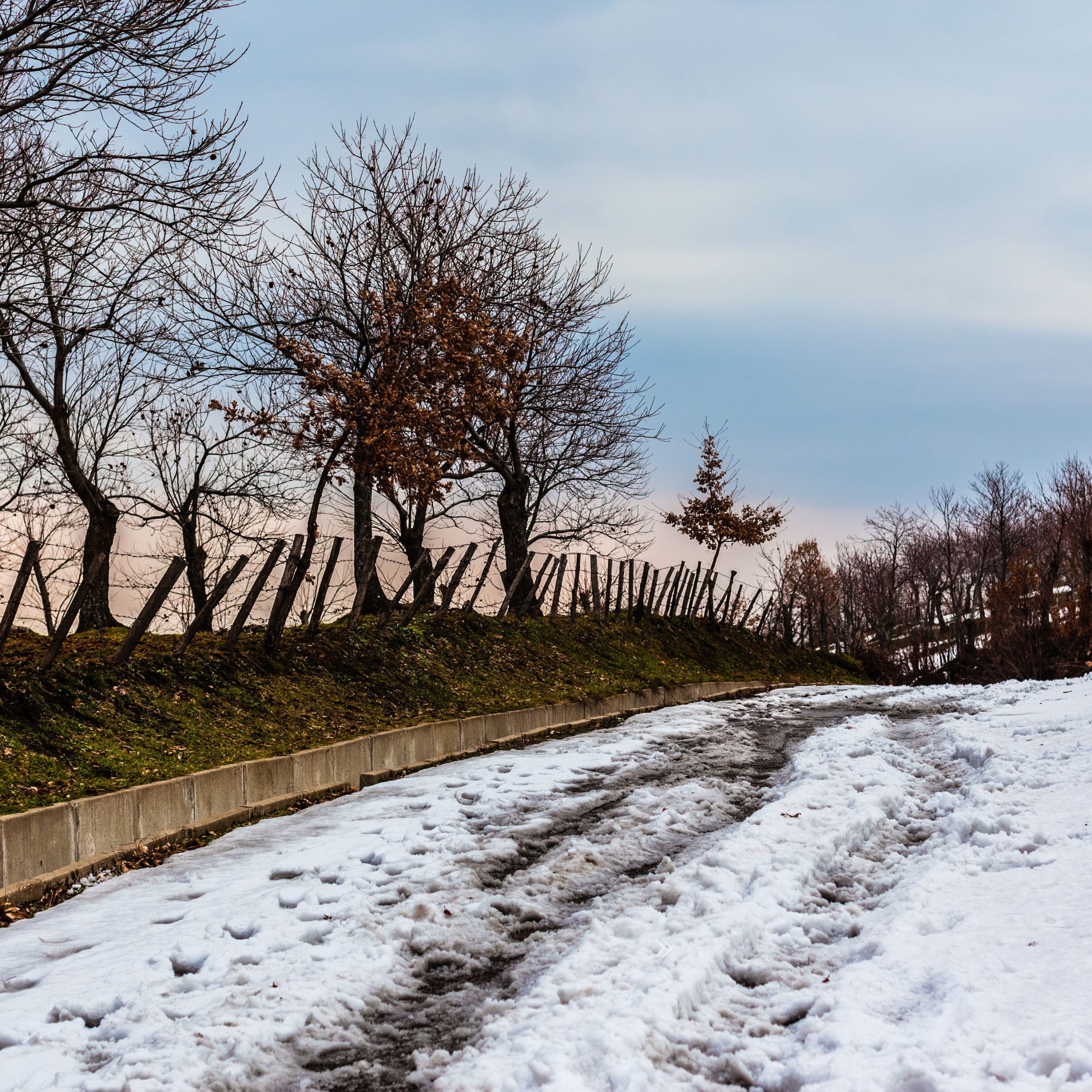Gritting for snow and ice is essential for any business with premises. There are several types of grit and that are commonly used. Each type of grit has its own pros and cons based on factors such as effectiveness, cost, and environmental impact. Here are some of the different types of gritting materials and their associated advantages and disadvantages to help you decide what type of grit is best for your business premises.
Rock Salt (Sodium Chloride)
Pros: Rock salt is widely available, cost-effective, and melts ice effectively. It helps to prevent snow and ice from bonding to the road surface, making it easier to clear. Rock salt is a popular type of grit.
Cons: It is less effective at very low temperatures (below -9°C/15°F) and can corrode metal surfaces, including vehicles and infrastructure. Additionally, excessive use of rock salt can have negative environmental impacts on soil and waterways.
Calcium Chloride
Pros: Calcium chloride is more effective than rock salt at lower temperatures, usually down to around -29°C/-20°F. It also works faster and requires less material to achieve the same melting effect.
Cons: It is more expensive than rock salt and can still cause corrosion, although to a lesser extent. Overuse of calcium chloride can harm vegetation and aquatic life.
Magnesium Chloride
Pros: Magnesium chloride is effective at melting ice and snow, even at very low temperatures. It is less corrosive than rock salt and calcium chloride and poses fewer risks to vehicles and infrastructure.
Cons: It is more expensive than rock salt and can have some negative environmental impacts, although it is considered less harmful than other chlorides.
Sand
Pros: Sand does not melt ice but provides traction on slippery surfaces, making it safer for vehicles and pedestrians. It is inexpensive and readily available making it a popular type of grit.
Cons: Sand does not actively melt ice or prevent bonding like salt-based materials. It needs to be cleaned up after the snow and ice have melted, as it can accumulate and create drainage issues. It may also be less effective in areas with heavy snowfall or in very low temperatures.
Organic Alternatives
Pros: Some environmentally friendly alternatives, such as beet juice or corn-based products, are gaining popularity. These substances can provide traction and some limited ice-melting properties without the same environmental concerns as chlorides.
Cons: Organic alternatives are often more expensive and less readily available than traditional gritting materials. They may also have limited effectiveness in extreme cold or heavy snowfall conditions.
It’s worth noting that the choice of gritting material depends on various factors, including local climate, temperature, budget, and environmental considerations. Road maintenance authorities and professionals typically assess these factors to determine the most suitable gritting strategy for a particular area.
Consult the experts
Investing in a professional gritting company for snow and ice preparation can offer several benefits to your business – from choosing the type of grit to laying it at the right time. Here are some reasons why it can be advantageous.
Expertise and Experience
Gritting companies specialise in snow and ice management. They have the knowledge, experience, and trained personnel to handle snow and ice efficiently. They understand the best practices for gritting, ensuring thorough coverage and effective results.
Timely Response
Gritting companies are equipped to provide prompt and timely response to changing weather conditions. They monitor weather forecasts closely and can deploy their resources quickly to prevent or minimise snow and ice accumulation on your premises.
Reduced Liability
Snow and ice can pose significant safety hazards, leading to slip-and-fall accidents. By hiring a professional gritting company, you demonstrate your commitment to maintaining a safe environment for employees, customers, and visitors. This can reduce your liability and potential legal issues associated with accidents.
Cost Savings
While there is a cost associated with hiring a gritting company, it will result in long-term cost savings. Professional gritting helps prevent snow and ice from accumulating, reducing the need for expensive emergency snow removal services. It also minimises the risk of property damage caused by snow and ice, potentially saving you from costly repairs.
Increased Productivity
When your business premises are properly gritted and cleared of snow and ice, it allows for smooth operations and minimises disruptions. Employees can access the workplace safely, reducing absenteeism and improving overall productivity. Customers and suppliers can also navigate your premises without difficulty, ensuring uninterrupted business activities.
Peace of Mind
Another key thing to consider is that hiring a professional gritting company provides peace of mind, knowing that you have entrusted the task to experts. You can focus on your core business activities, knowing that snow and ice management is being handled effectively.
It’s important to assess your specific needs, budget, and the climate of your area to determine whether investing in a gritting company is the right choice for your business. Consider contacting local gritting companies to discuss their services, pricing, and customised solutions tailored to your requirements.






